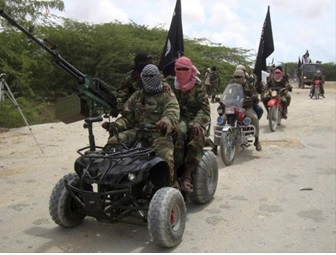By CHETI PRAXIDES AND ANDREW KASUKU, The Star
Nine years after Kenya went to Somalia, al Shabaab is still taking the fight to Kenyan soil, despite multiple operations and airstrikes to cripple them.

While it has become routine to hear of the attacks, the frequency and audacity with which they are occurring lately has raised eyebrows.
Kenyan soldiers crossed to Somalia on October 16, 2011, amid a spate of tourist kidnappings by al Shabaab. A week after the Operation Linda Nchi began, the enemy hit back, with twin attacks in Nairobi CBD that killed one and injured scores on October 24, 2011.
Since then, Kenya has experienced deadly attacks on passenger vehicles, shopping malls, bus stations, churches and military bases all around the country. Most of these attacks have happened in Nairobi, Mombasa, North Coast and Northern regions.
The attacks have made citizens, governments and international players question Kenya’s wisdom in sending soldiers to Somalia.
At the height of terror attacks in Tana River and Lamu counties in September 2015, the state launched Operation Linda Boni. Militants would take advantage of the thick extensive forest to hide after attacks along Tana River-Lamu Road.
The objective of the operation, which covers Lamu, Tana River and Garissa counties, was to flush out al Shabaab militants. The operation was initially planned to last just 90 days but was extended indefinitely.
The government also banned night travel to and from Lamu and introduced armed police escort for all PSVs coming into and leaving Lamu. The US has also chipped in with frequent drone attacks on al Shabaab targets in Somalia.
However, despite all the interventions in place, the recent attacks have brought to the fore the reality that there could still be gaps in the security system.
LATEST ATTACKS
On January 2 this year, three people died and three others seriously wounded after a convoy of buses travelling from Mombasa to Lamu was attacked by al Shabaab militants at Nyongoro area in Witu, Lamu West.
The attack happened despite authorities marking the place as notorious for attacks. Many theories were fronted, including the possibility of bus companies using the militants to scare away competitors.
“The buses had an escort, as usual. I guess it could be a case of business rivalry,” a top cop based in Garsen told the Star moments after the attack. It is not clear whether police investigated the claim.
The attack also happened despite an alert issued before Christmas and commanders instructed to remain alert.
Kenya’s ability to effectively process intelligence on impending attacks was put into doubt.
The poor road and mobile networks in most areas classified as terror-prone in Lamu has equally made it hard for locals to call for timely help whenever they come under attack and also for the security units to respond promptly.
Two days after the Nyongoro attack, heavily armed al Shabaab militants attacked the Manda KDF-US military base, one of the most daring raids for the militants.
The US lost three personnel in the attack — one soldier and two contractors. Five al Shabaab terrorists were killed and five others captured alive.
It is not clear how the militants made a surprise attack on the heavily guarded base, raising more doubts on the ability and effectiveness of intelligence gathering.
Reports indicate Abu Hamza Al-Kinyi led the group. He was among the five militants killed by Kenya Special Forces. He was a close associate of Shirwa, who was killed in Baure alongside Thomas Evans after they attempted to enter a military camp at Baure in Lamu in 2015.
Al-Kinyi, a Kenyan who joined the terrorist group in 2013, survived a precision airstrike in Jiliib, Somalia, in 2014. Another Kenyan was among the militants killed, while the rest were Somali nationals, according to sources.
And just this week, on Monday, three non-local teachers were killed in an al Shabaab attack in Kamuthe, Garissa county. A communication mast and a police post were also attacked. Targeting non-locals has been part of al Shabaab’s strategy in the region and has previously led to an exodus of non-local teachers, an eventuality called for afresh following the latest attack.
Read more: Why al Shabaab is resurgent despite attempts to defeat it
Source: The Star


